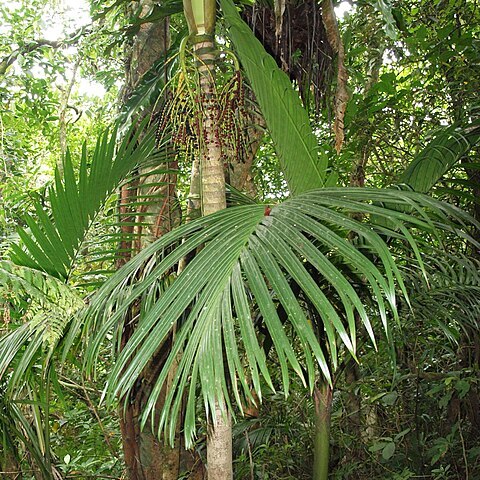A palm. It grows less than 5 m tall. The trunk is 20 cm across. It is swollen at the base and grey-white. The leaves are compound with leaflets along the stalk. The leaves are 2 m long. The leaves are deep green. The leaflets are narrow and 60 cm long by 2-2.5 cm wide. The sheath is 1 m long. The flowers are of separate sexes and on the same plant. The fruit is oval and 1.8 cm long by 1.2 cm across. They are deep red. They contain one seed.


